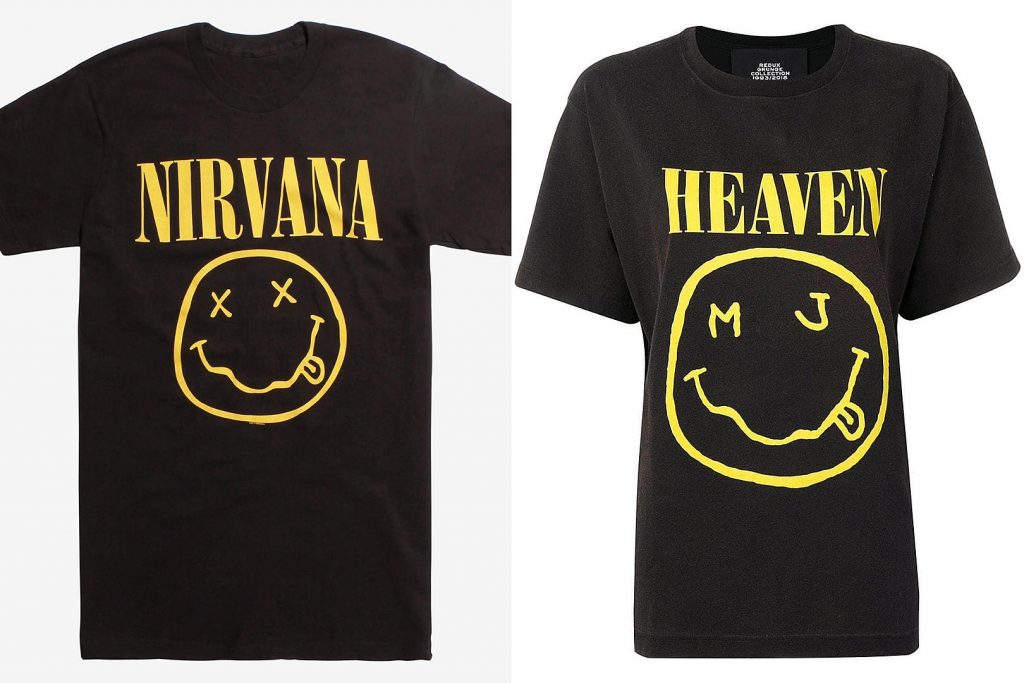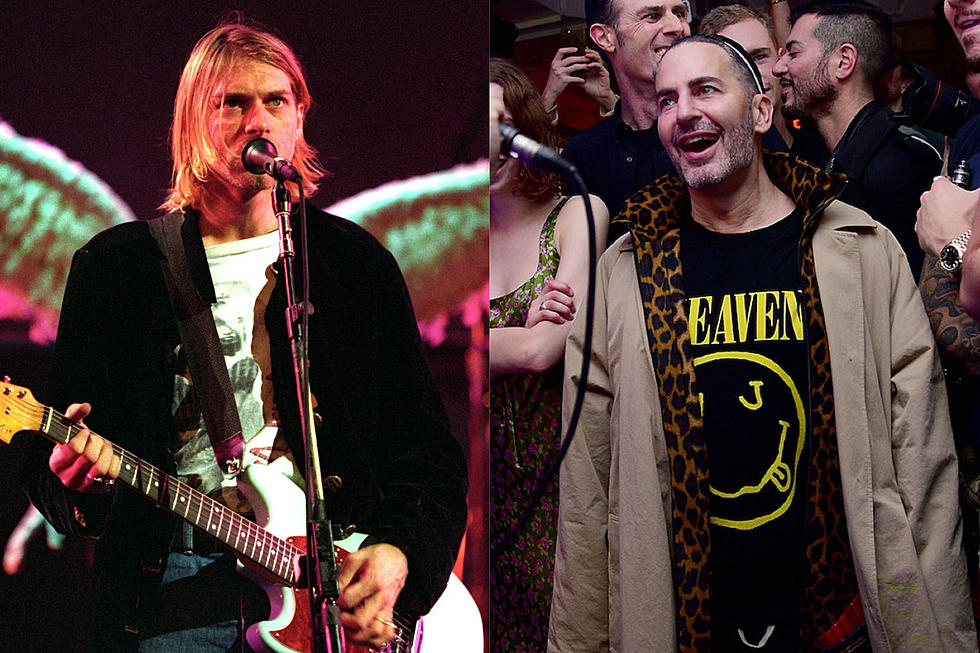By Francesca Ionescu
Grunge is selling again, and this comeback created legal trouble for Marc Jacobs. The designer created a T shirt using the same font and iconic smiley face that appears on official Nirvana merchandise, which later led to Nirvana suing for infringement of copyright. The lawsuit claims this infringement will “threaten to dilute the value of Nirvana’s licenses with its licensees for clothing products”, and that Marc Jacobs is using to make the collection “more authentic”.

loudwire.com
In retaliation Marc Jacobs opened a countersuit, claiming the original suit was “invalid and unenforceable”. A problem for Nirvana’s representatives was that David Grohl and Krist Novoselic -the two surviving band members- were unsure if the design was created by Kurt Cobain, which offers a basis on which the case can be dismissed. Copyright law in fashion however covers anything.
Grunge evolved in the 80s and 90s, as two Seattle bands – Pearl Jam and Nirvana- created music which was between hard and alternative rock which was significant in its relatable lyrics. The genre grew as it appealed to a teen audience, and the band members had a new style casual enough to be affordable but different and easy to stand out. Nirvana was a huge phenomenon, formed originally by Cobain and Novoselic, with their first album titled ÔÇÿBleach’ suggestive of a rougher alternative music style. Their big breakthrough came when leaving Sub Pop and signing to DGC Records, under which ÔÇÿSmells like teen spirit’ came out. The single especially put Nirvana on the “mainstream” stage, with the ÔÇÿNevermind’ album being popular with the public as well as diehard fans. The high success lasted until 1994, when Kurt Cobain died causing the subsequent break of Nirvana. However, the grunge period seemed to go on for just a few more years as people were mourning the main icon of an era.

loudwire.com
This rise in grunge fashion was appreciated by retailers who filled their shelves with flannel shirts, ripped jeans and combat boots, all selling out and trending. At the same time when the band was in its prime era, the grunge fashion changed Marc Jacobs’ career. While working for Perry Ellis he followed the easy American style of the brand. Conversely, in 1992 he put on his own show with the edgy fashion at the time, which later got him fired. He however kept putting out fashion inspiration from the world around him, especially from young trends and music.
Winyona Ryder was the ÔÇÿIT girl’ of the 90s, and she was constantly wearing Marc Jacobs, putting him out to the public outside the high end of fashion retailers. Now, Jacobs is rereleasing his 1992 collection, in an attempt to get back on the market, through a new wave of young grunge lovers and nostalgics.
For a designer critiqued for being out of touch, the lawsuit seems to be the last thing he needs and Nirvana fake merch is still out on the market at smaller vendors which are not worth legally pursuing. So, who profits off fashion copyright? While the laws make sure credit goes to where needed, it is impossible to track down every replica of an original, as well as making fashion less accessible. In the end copyright is often about who’s bigger and who was first, and as in Nirvana’s case, about who gets to benefit off a certain legacy.


